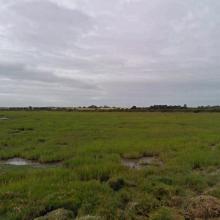
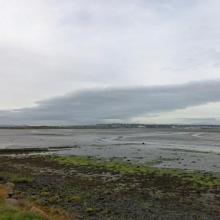
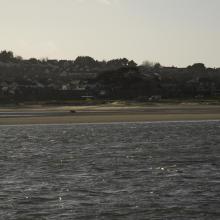
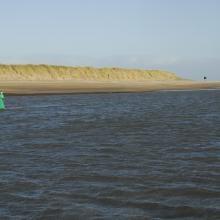
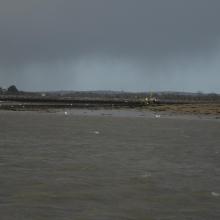
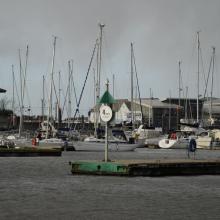
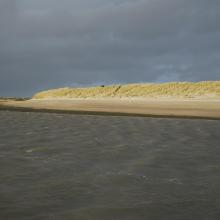
The Broadmeadow Estuary
- Country:Ireland
- Site number:833
- Area:546 ha
- Designation date:07-06-1996
- Coordinates:53°27'N 06°09'W
Materials presented on this website, particularly maps and territorial information, are as-is and as-available based on available data and do not imply the expression of any opinion whatsoever on the part of the Secretariat of the Ramsar Convention concerning the legal status of any country, territory, city or area, or of its authorities, or concerning the delimitation of its frontiers or boundaries.
Overview
This estuary is cut off from the sea by a large sand spit and includes saltmarshes, salt meadows, rocky shores, a well-developed dune ridge and sand mudflats. There are beds of blue mussels and eelgrass and extensive mats of green algae. A railway viaduct built in the 19th century crosses right through the Site, influencing the tidal regime as the estuary does not fully empty at low tide but remains as a permanent lagoon. The estuary is an important wintering site for numerous species of waterbird including the globally threatened common loon (Gavia immer). The Site supports more than one percent of the flyway population of the light-bellied brent goose (Branta bernicla hrota). It regulates water quality and flooding and mitigates the effects of storms. The inner part of the estuary is used for water sports. A section of the outer estuary has been infilled for a marina and housing development and the invasive ascidian (Didemnum vexillum) which is known to occur at the marina could pose a threat to several habitats. Monitoring is implemented and National Parks and Wildlife Service Conservation Rangers regularly inspect the Site.
Administrative region:
Dublin
- Global international designation:
- UNESCO Biosphere Reserve
- Regional (international) legal designations:
- EU Natura 2000
- Last publication date:06-07-2022
